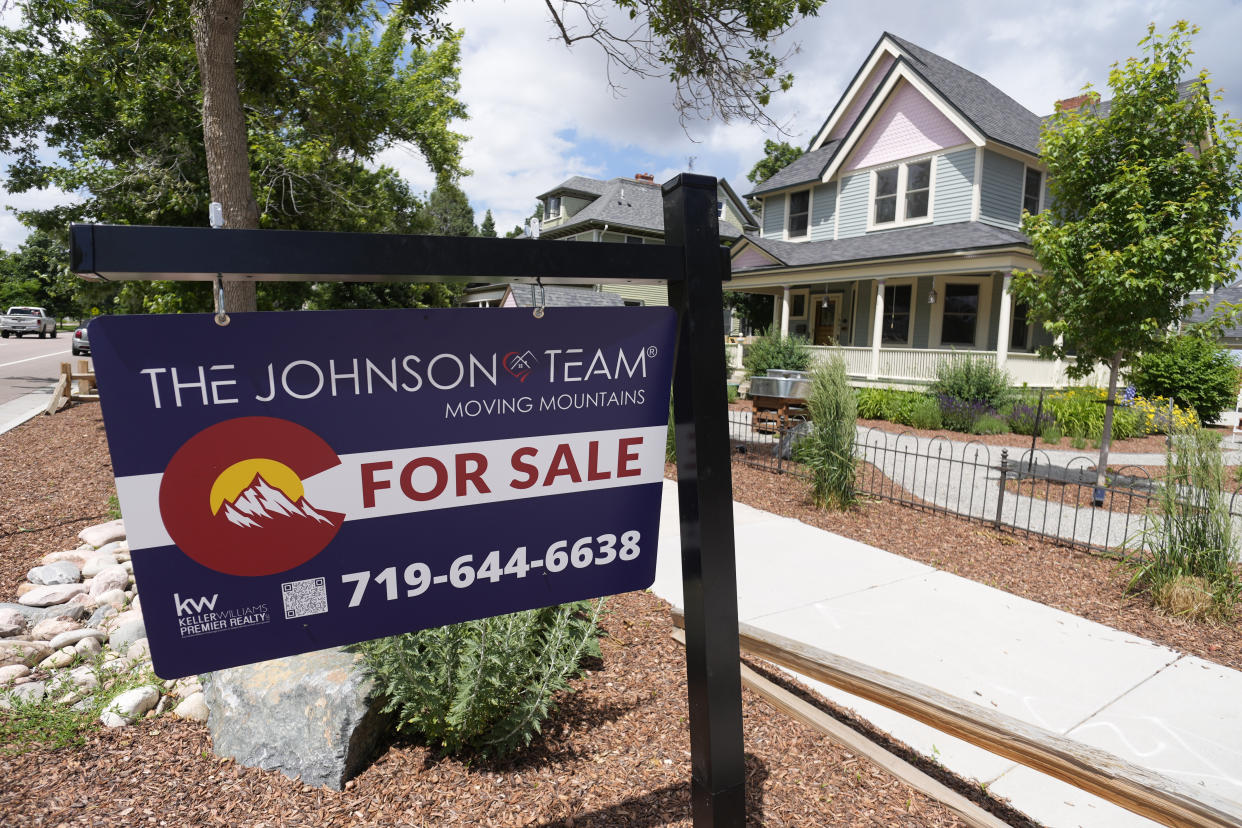Home prices cement a rebound with 4 straight months of growth
Real estate prices grew again in May from the previous month as opportunistic buyers took advantage of a dip in mortgage rates during the month while competing for limited inventory.
The S&P CoreLogic Case-Shiller US National Home price index increased by 0.7% month over month in May on a seasonally adjusted basis, up from the 0.5% increase from April. That marked the fourth consecutive monthly increase.
The indicator measuring the 20 largest cities in the US saw prices grow 1% on a seasonally adjusted basis, just outpacing last month's 0.9% jump. That exceeded the Bloomberg consensus estimate of a 0.7% gain.
"Home prices in the U.S. began to fall after June 2022, and May’s data bolster the case that the final month of the decline was January 2023," said S&P DJI managing director Craig J. Lazzara in a statement.
The Federal Housing Finance Agency also reported an average US home prices increased of 0.7% in May compared to last month on a seasonally adjusted indicator. May's year-over-year change was 2.8% and monthly growth remained unchanged from April.
The turnaround in home prices shows how the insufficient supply of properties for sale remains a major factor in the housing market and a headwind that buyers are forced to swallow.
"Slightly lower rates motivated eager buyers to enter the housing market, but dwindling home supply meant that this demand kept upward pressure on prices," Hannah Jones, research analyst at Realtor.com, said in a press release. "Though buyer demand has generally lessened, limited existing home stock means many markets are seeing competition reminiscent of the last few years."
Year over year, the S&P CoreLogic Case-Shiller national index recorded a 0.5% annual decline in May, while the 20-city index registered a non-seasonally adjusted 1.7% decline. The latter bested the 2.35% drop economists polled by Bloomberg expected.
The index uses the repeat sales method to measure home price growth. This method tracks data on properties that have sold at least twice to more accurately calculate the change in each home's value.
A reheating across the nation
The latest report echoes a private sector one released earlier this month that showed price growth hit new highs in May, with a 0.7% month-over-month increase and an annualized growth of 8.9%, according to Black Knight. That report also showed that housing activity has warmed up in many cities across the US.
Tuesday’s report showed similar trends.
"The ongoing recovery in home prices is broadly based. Before seasonal adjustment, prices rose in all 20 cities in May (as they had also done in March and April). Seasonally adjusted data showed rising prices in 19 cities in May, repeating April’s performance," Lazzara said.

Still, "regional differences continue to be striking," he added.
For instance, the cities that posted the biggest year-over-year price gains were Chicago, Cleveland, and New York, with annual increases of 4.6%, 3.9%, and 3.5%, respectively.
"If this seems like an unusual occurrence to you, it seems that way to me too," Lazzara said. "It’s been five years to the month since a cold-weather city held the top spot (and that was Seattle, which isn’t all that cold)."
Still, the laggards remain on the Pacific Coast. Seattle and San Francisco registered the worst annual price drops of 11.3% and 11%, respectively. But those were softer declines than the respective 12.4% and 11.1% drops recorded in April.
Overall, prices in the West region are still the worst-performing with prices falling 6.9% year over year there, according to the S&P CoreLogic Case-Shiller index. The Midwest performed the best with prices rising 2.7%, unseating the Southeast (+2.1%) as the strongest region.
Mortgage rates should remain elevated
May's slightly lowered borrowing cost helped to fuel buying activity that pushed prices higher nationwide.
"This month's index data tracks prices for March, April, and May, a period during which mortgage rates spanned a 0.5 percentage point range, but largely remained on the low end," Jones said.
In fact, mortgage rates remained below 6.5% through most of April and May, according to Freddie Mac’s mortgage rate tracker. Since June, though, the average rate on the 30-year fixed mortgage has remained solidly above that threshold and briefly flirted with 7%.
The Federal Reserve is largely expected to announce another rate hike on Wednesday, hoping to pull off a 'soft landing' in the economy that also cushions the housing market. That likely will keep rates from moderating too much more in the near term.
"We expect this trend to keep playing out as mortgage rates remain elevated for the time being," Jones said. "Limited inventory relative to buyer demand will likely keep prices somewhat afloat. However, these trends vary greatly market to market."
Rebecca Chen is a reporter for Yahoo Finance and previously worked as an investment tax certified public accountant (CPA).
Read the latest financial and business news from Yahoo Finance
